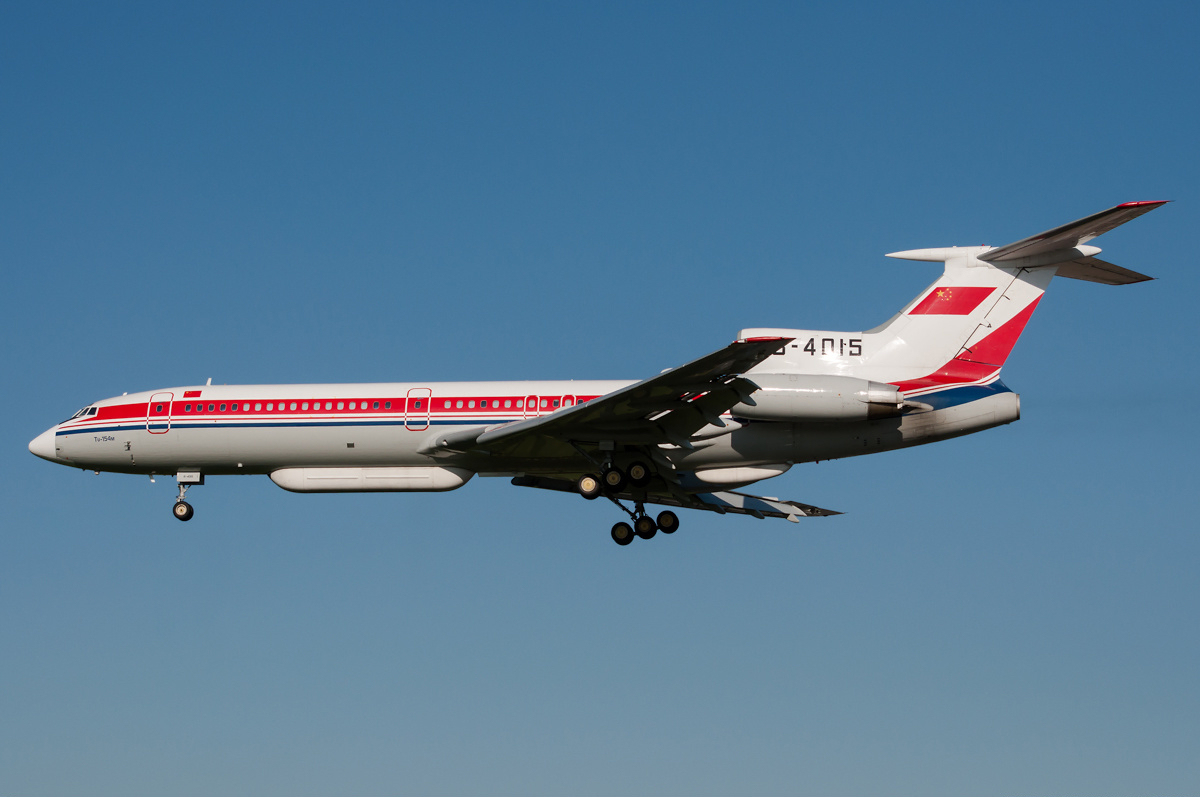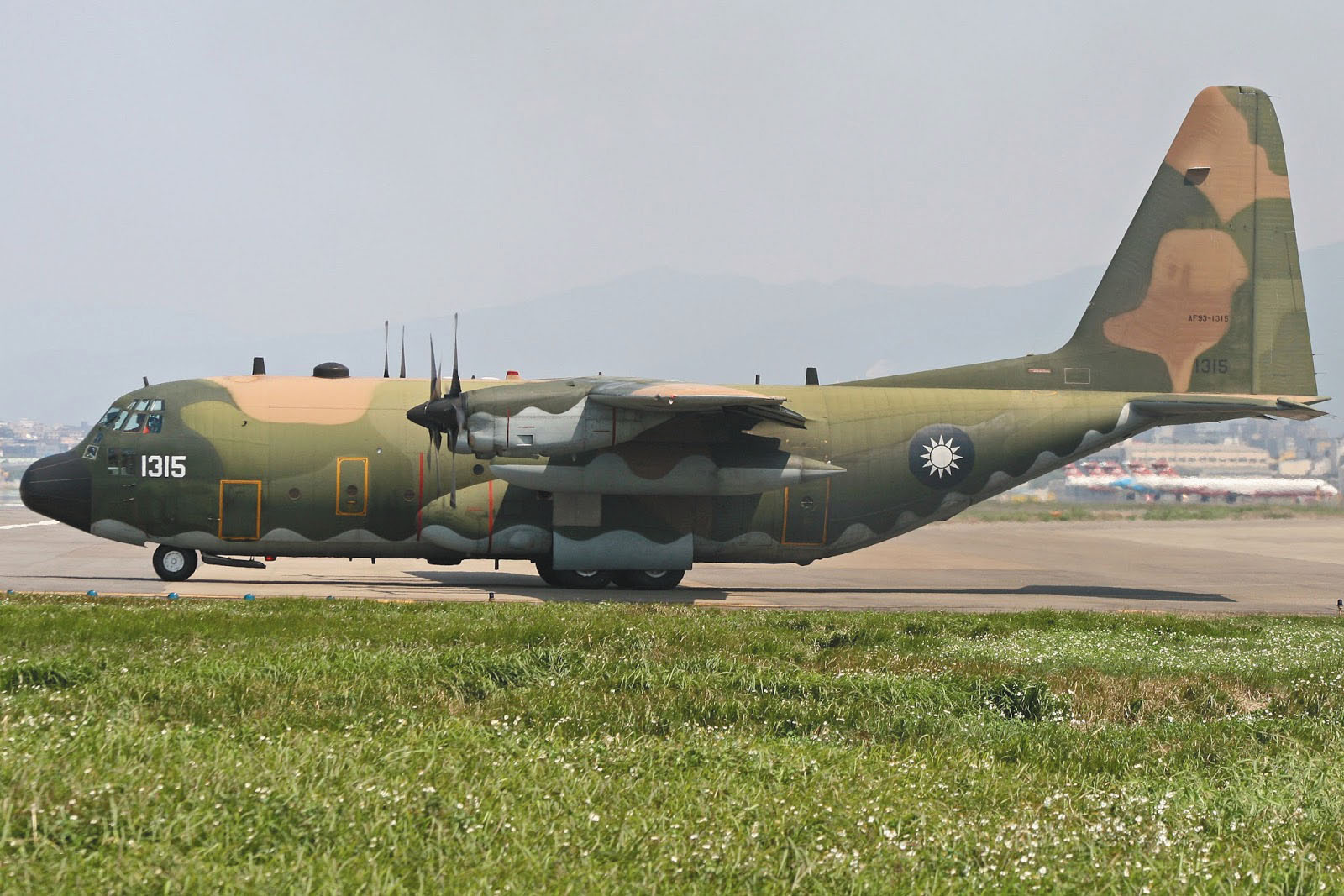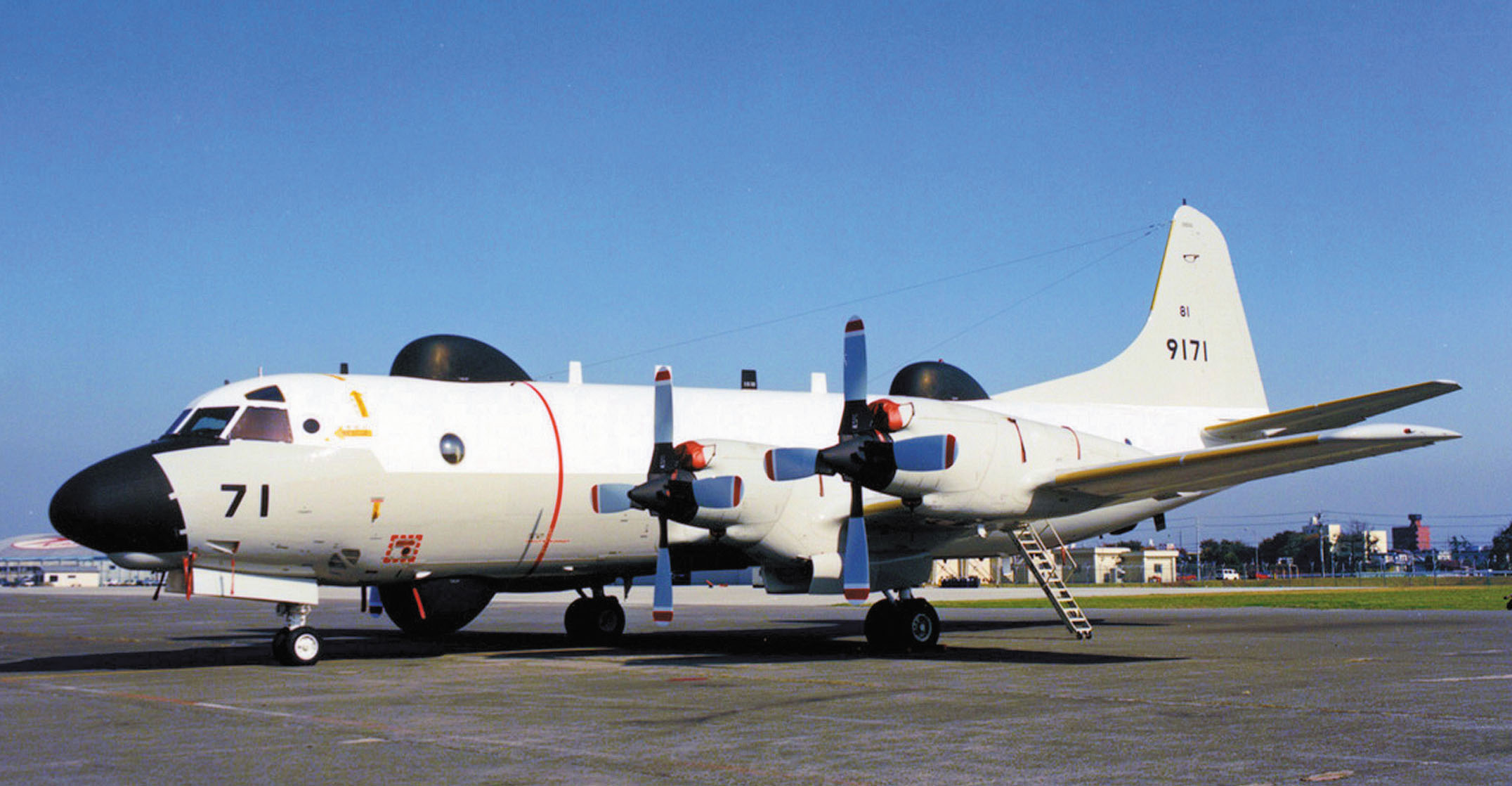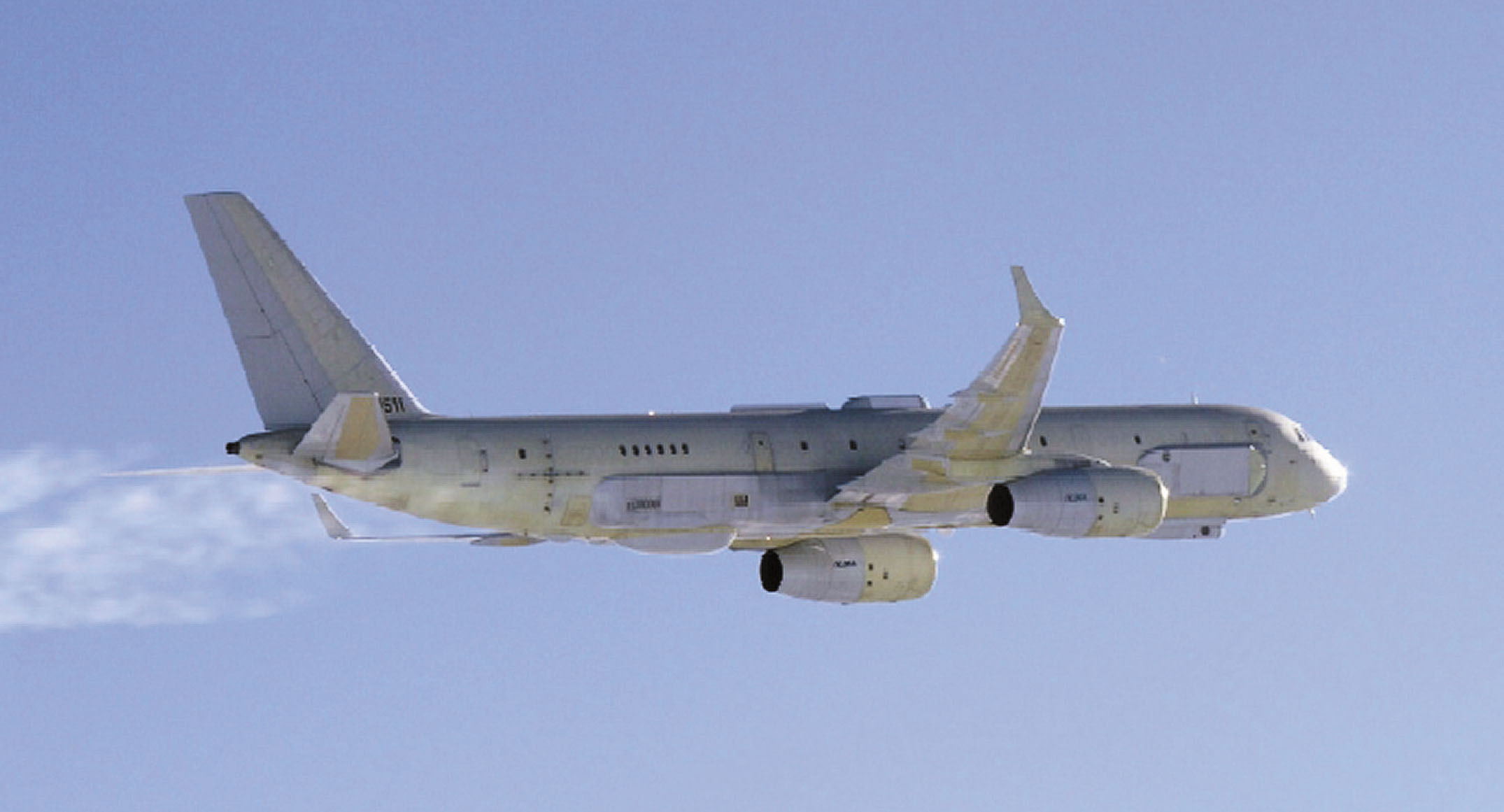Unknowable Unknowables – Airborne SIGINT in the Asia-Pacific Region – JED, February 2017
– By Martin Streetly –
Following the tumultuous events of 2016, it is probably fair to say (to misquote former US Secretary of Defense Donald Rumsfeld) that 2017 is going to have its share of “unknowable unknowables.” Curiously, the Pacific may be one place where the unexpected is less “unknowable” than elsewhere in the world, with the Democratic People’s Republic of Korea continuing to rattle its nuclear saber and China continuing to stir the pot with its territorial claims in the South China Sea. What is less clear is what will happen if the Trump Presidency renews US ties with China’s “lost province” of Taiwan and/or opens a trade war with mainland China. And, potential changes to Japan’s constitution relating to the use of its armed forces could have a significant impact on the checks and balances that currently hold true within the region.
Obviously, “unknowable unknowables” are not a good thing, and the world of 2017 is likely to see an increasing emphasis on intelligence gathering of all types as the global community attempts to second guess the future. Here, signals intelligence (SIGINT) will play its part, with airborne manned SIGINT collection forming a significantly flexible and accessible component of this process, particularly in areas, such as the Pacific, where there are key flash points in a region whose vastness is greater than any other on Earth.
PRC SIGINT
Outside the “overhead assets” deployed by China, Russia and the US (together with the regional SIGINT umbrella provided by American RC-135V/W Rivet Joint, RC-135S Cobra Ball, EP-3E and U-2S aircraft), China, Japan, South Korea and Taiwan are known to include dedicated manned SIGINT platforms within their inventories, with Australia and Singapore possibly doing so as well.

China’s People’s Liberation Army Air Force and Navy (PLAAF/PLAN) operate a triad of SIGINT platforms that are based on the Shaanxi Y-8 and Y-9 transports (themselves derived from the Russian Antonov An-12 aircraft) and the Tupolev Tu-154 airliner. Taking these in reverse order, the Tu-154M/D “electronic warfare” aircraft has been variously described as being a SIGINT platform or a Chinese equivalent of the US Joint STARS. In-fact, two Tu-154M/D sub-variants have been identified, one of which has tentatively been identified as the Tu-154M/D Type I and which (over time) has been exemplified by tail number B-4108. As such, B-4108 exhibits a range of ventral “lumps and bumps” that are frequently associated with a strategic ferret aircraft. Elsewhere, at least four Tu-154M/Ds (tail numbers B-4015, B-4016, B-4029 and B-4138) have been equipped with a large “canoe” fairing (hence the Joint STARS analogy) beneath their forward fuselages together with a smaller, teardrop-shaped fairing further aft. While JED is not wholly convinced by the Joint STARS description, Japan’s Ministry of Defense (whose fighters regularly intercept Chinese canoe-equipped Tu-154s) has made mention of “radar” Tu-154s as being amongst the Chinese aircraft intercepted by the Japanese Air Self-Defense Force (JASDF) near Japanese air space during Japan’s 2012 fiscal year. Most recently, canoe-type Tu-154M/Ds (possibly designated as the Tu-154M/D Type II) have continued to monitor Japan and (particularly) the South China Sea, and the type is said to be assigned to the PLAAF’s 102nd Air Regiment stationed at Beijing-Nanyuan.
Turning to China’s Y-8 ferrets, JED believes that China has deployed three such aircraft designated as the Y-8CB (also known as the Gaoxin 1), the Y-8JB (also known as the Y-8(DZ) and/or the Gaoxin 2) and the Y-8G (the Gaoxin 3). All three configurations are believed to have their roots in the late 1990s Gaoxin program, which has produced multiple Y-8/Y-9 special mission aircraft that are configured for the airborne early warning and control, electronic warfare, SIGINT, airborne command post and communications relay roles. Regarding the cited Y-8 SIGINT platforms, the Y-8CB is thought to have made its maiden flight on January 26, 2000, and is externally characterized by a nose radome, a large canoe fairing beneath its forward fuselage, fore and aft dorsal radomes, a thimble-shaped radome beneath its center section and multiple blade and rod antennas above and below its fuselage and attached to its rear loading ramp. To-date, aircraft tail numbers 20311, 21011, 21012, 21013, 3011, 5121 and 5123 have been identified as being Y-8CBs, with the PLAAF’s 30th, 47th and 58th Air Regiments together with the PLAN’s 6th Air Regiment, all being said to have Gaoxin 1 aircraft in their inventory.
For its part, the Y-8JB was first identified during the summer of 2004 and is said to have been initially equipped with a variant of the China Electronics Technology Company’s (CETC) KZ800 ELINT architecture. Here, the KZ800 suite has been described as being an “advanced” computerized system that is suitable for installation aboard medium- to large-sized fixed-wing aircraft and which is designed to detect, analyze (parameter measurement), identify and locate land-based and shipboard radar emitters that operate within the 1- to 18-GHz frequency band. Again, its target set is said to include air and airfield defense systems. The Y-8JB itself shares some of the Y-8CB’s external characteristics together with radomes beneath its nose, faired into its fin fillet, and mounted on its wingtips, fuselage sides, and above its faired-over tail turret. Aircraft tail numbers 9331, 9341, 9351, 9361 and 9527 have been identified as being Y-8JBs, and the type is said to have been assigned to the PLAAF’s 6th Air Regiment. Again, the “DZ” suffix in the type’s alternative Y-8(DZ) designation may stand for Dianzi Zhencha (ELINT) or Dianzi Zhichi (electronic support).
The KZ800 suite may also form the basis of the mission system installed aboard the Y-8G Gaoxin 3 aircraft, which makes use of the Y-8 Category II F400 airframe. Those aircraft bearing the tail numbers 2504, 10015, 20778, 21014, 21015, 21016, 21017, 5125, 5126 and 5128 have been identified as being Y-8Gs, and the type is said to have been assigned to the PLAAF’s 47th and 58th Air Regiments and the service’s 30th Electronic Warfare Regiment. Finally, the second-generation Y-8 transport aircraft (designated as the Y-9) appears to have spawned its own SIGINT derivative in the form of the Y-9JB Gaoxin 8 (designation not confirmed) platform. As such, it is characterized by an extensive array of external features that include radomes on its vertical fin, nose, lower fuselage, and fuselage sides. Aircraft tail numbers 9221 and 9241 (both of which were photographed by the JASDF during late 2014) have been identified as being Y-9JBs, with the type being said to have been assigned to the PLAN’s 6th Air Regiment.
In terms of operational usage, China’s Y-8/Y-9 ferrets (and, indeed, its Tu-154M/Ds) have most frequently been encountered over the South China Sea in the area of the group of islands whose ownership is currently being contested between China, Malaysia, the Philippines and Vietnam.
TAIWAN

Across the Taiwan Strait, the Republic of China (Taiwan) is also credited with operating its own ferret capability in the form of the C-130H, tail number 1351. This aircraft has been modified for SIGINT collection in a program that began during the mid-1990s and is understood to be equipped with the Airborne Electronic Surveillance System (AESS) that has been developed/installed by Lockheed Martin and Taiwan’s National Chung-Shan Institute of Science and Technology. As such, this aircraft (which is known locally as a C-130HE) is externally characterized by antenna arrays mounted beneath its nose, on the top of its vertical tail surface, on the sides of its forward fuselage, and in two small ventral radomes. It is currently understood to be assigned to a unit that is stationed at the Republic of China Air Force’s Pingtung airbase.
JAPAN
Japan’s airborne SIGINT capability is vested in the JASDF’s YS-11 platform and the Japanese Maritime Self-Defense Force’s (JMSDF) EP-3 aircraft. In reverse order, the JMSDF is reported to have received the first of five EP-3 ferret variants of the Kawasaki-built P-3C maritime patrol airframe (tail numbers 9171 through 9175 inclusive) during 1991. Externally characterized by large sized dorsal (three including a satellite communications antenna housing) and ventral (two) radomes, the EP-3 is operated by the Service’s Iwakuni-based 81 Kokutai, and is understood to have been equipped with a baseline mission suite that covered the 30 MHz- to 18/20 GHz-band and which was jointly developed by contractors NEC (low band sub-system) and Mitsubishi (high band sub-system). Again, the designations NH/LR-107 and NH/LR-108 have been associated with these two configurations (with the specific nomenclature-band coverage relationship remaining unclear). The type is said to have accommodation for a crew of 23 and to be both SIGINT and telemetry intelligence (TELINT) capable. Of the five, aircraft 9174 appears to have been written-off in a ground accident during February 2014. Within the 81 Kokutai (also known as VQ-81), the EP-3 is partnered with four OP-3C multi-sensor “special projects” aircraft. Here, both the EP-3 and the OP-3C are fitted with a similarly shaped radome beneath their forward fuselages.

For its part, the JASDF’s Iruma-based Denshi Hiko Sokuteitai (Electronic Intelligence Flight) operates a quartet (tail numbers 82-1155, 92-1157, 02-1159 and 12-1161) of YS-11EB SIGINT aircraft. Here, the “EB” configuration is externally characterized by an array of dorsal and ventral radomes together with what appears to be an auxiliary power unit housing that is scabbed onto the starboard side of the aircraft’s rear fuselage. Circa 2000, the YS-11EB was the subject of an upgrade that is understood to have included the introduction of a satellite communications capability and, over time, the type has been associated with the Toshiba J/ALR-1 and Mitsubishi J/ALR-2 mission systems. Again, the YS-11EB is said to have been involved in Japanese monitoring of Sino-Russian land, sea and air activity in the northwest Pacific and the Sea of Japan and is understood to have been used to monitor North Korean missile tests. This latter tasking suggests that the “EB” has a TELINT capability in addition to its core SIGINT role. It should also be noted that, over time, the JASDF has also acquired Thales’ ASTAC ELINT pod for use aboard its RF-4EJ/-4EJ reconnaissance aircraft. In Japanese service, this capability is known as the Tactical Electronic Reconnaissance (TACER) system, with Mitsubishi having acted as the national prime contractor on the effort.
SOUTH KOREA
The remaining confirmed member of the Pacific airborne SIGINT club is the Republic of Korea whose air force operates a quartet of Hawker 800SIG (also known as the RC-800 and bearing the tail numbers 58-342, 58-351, 58-352 and 58-357) that were acquired under the Peace Pioneer/Baekdu program. As such, the Hawker 800SIG is externally characterized by equipment fairings beneath its forward fuselage and tail assembly and, as originally supplied, was equipped with an E-Systems (today’s L-3 Technologies Mission Integration business unit) – developed mission suite that incorporated communications and electronic intelligence capabilities (up to the Ka- (26.5 to 40 GHz) band), a high degree of automation, and a downlink for the transmission of acquired data to a ground station for processing.
While continuing in service, the Hawker 800SIG is becoming somewhat long-in-the-tooth and, in August 2010, local media sources began to report South Korea’s Defense Acquisition Program Administration (DAPA) as being set to issue a request for proposals for a new generation SIGINT aircraft that would incorporate “more advanced signal and communications intelligence equipment” than the 800SIG. As such, the intent was said to have been to acquire two such aircraft that would be equipped with either a LIG Nex1 or Samsung Thales-sourced mission suite. Here, the system specification was billed as including “communication, electronic and foreign instrumentation signals intelligence” sub-systems installed aboard either a Gulfstream Aerospace or Bombardier airframe, with system integration to be carried out by either Korea Aerospace Industries or South Korean flag-carrier Korean Air. Subsequently (and while the foregoing appears to have been too ambitious in terms of available funding and local ability to deliver the required collection capabilities), December 2011 saw France’s Agence France-Presse (AFP) press agency reporting DAPA as having announced that it was procuring two Dassault Falcon 2000 aircraft for use as COMINT platforms and as a means of detecting North Korean missile launches. Again, the AFP account suggested that the new aircraft would be acquired during 2017, and would replace “some of South Korea’s aging spy aircraft including [its] RC-800s…” At the time of writing, such a procurement had not been confirmed.
Before leaving the Pacific region’s confirmed airborne SIGINT assets to look at those that are rumored and/or not confirmed, it is worth mentioning that Russia continues to be active in the field and intermittently flies Il-20M and Tu-204R ferret missions in the region with an emphasis on Japan.
OTHER AIRBORNE SIGINT OPERATORS
In the rumor department (and as noted earlier), both Australia and Singapore may operate such capabilities. In reverse order, Singapore is said to have acquired at least one SIGINT-configured C-130 during the 1990s, with the required mission suite/s including high and very high frequency (HF/VHF, 3 to 30 MHz/30 to 300 MHz) band collection arrays sourced from Israel. Again, such aircraft are said to have been used to monitor activity along the coasts of Thailand and Malaysia and around the Andaman and Nicobar Islands in the Bay of Bengal.

As far as Australia is concerned, Australian defense media sources continue to maintain that Australia has (or has had in the recent past) an airborne SIGINT capability, an assertion that the Australian Government neither confirms nor denies. In the first instance, non-official Australian sources have continued to report the existence of a late 1990s program designated as Peace Mate that involved the modification of a Royal Australian Air Force (RAAF) C-130H transport and a P-3C maritime patrol aircraft for what seems to have been a COMINT collection mission. Of the two, the Peace Mate C-130 is said to have been primed by Australian contractor Tenix (subsequently absorbed into BAE Systems Australia), while the program’s P-3C is described as having been an E-Systems product that was capable of operating on “the edge of a [target] nation’s airspace” and of sucking-up “every form” of HF, VHF and ultra high frequency (UHF, 300 MHz to 3 GHz band) communications signals including “digital mobile phone” networks.
While the existence of the Peace Mate program may or may not be an urban myth, subsequent investigation and reporting does seem to suggest that Australia does have some form of airborne SIGINT capability vested in its AP-3C surveillance aircraft fleet. As suggested by its designation, the AP-3C is a re-work of the RAAF’s P-3C maritime patrol aircraft that was undertaken by what is now L-3 Technologies in a program that was launched during 1999. Amongst the re-worked platforms, tail numbers A9-657 and A9-660 may have been modified for a SIGINT role, with photographs of both aircraft from the 2014-2015 period showing them to have had the AP-3C’s standard sonobuoy provision removed and replaced by a thimble-shaped radome together with a revised ventral antenna farm. Whether or not this configuration represents a dedicated SIGINT capability, reflects a putative “carry-on” ELINT capability that is supposed to have been developed for the type, or is part of an upgrade to the AP-3C’s standard ALR-2001 electronic support system remains unclear. That the described configuraation might relate to a dedicated SIGINT capability may be given some credence by unconfirmed (but frequently reliable) Australian media reports that suggests that post-2019 (when the P-8A will have replaced the AP-3C in Australian service) the RAAF intends to maintain four AP-3Cs in a SIGINT role until circa 2023.
Hopefully, the foregoing will have given JED’s readership a flavor of the sorts of manned airborne SIGINT activities that are being pursued by the nations of the Pacific. While “crystal ball” gazing at this time is probably an even less profitable activity than usual, it is not rocket science to forecast that such provision can only expand as the “unknowable unknowables” become more “unknowable,” and the technology needed to “listen in” becomes more accessible to more potential users. Here, there can be no doubt that unmanned aerial vehicles will play an increasing role alongside their manned counterparts. ♦
If you enjoyed this article, please share. If you would like to read more articles like this one, we encourage you to join the AOC to receive a copy of JED every month.